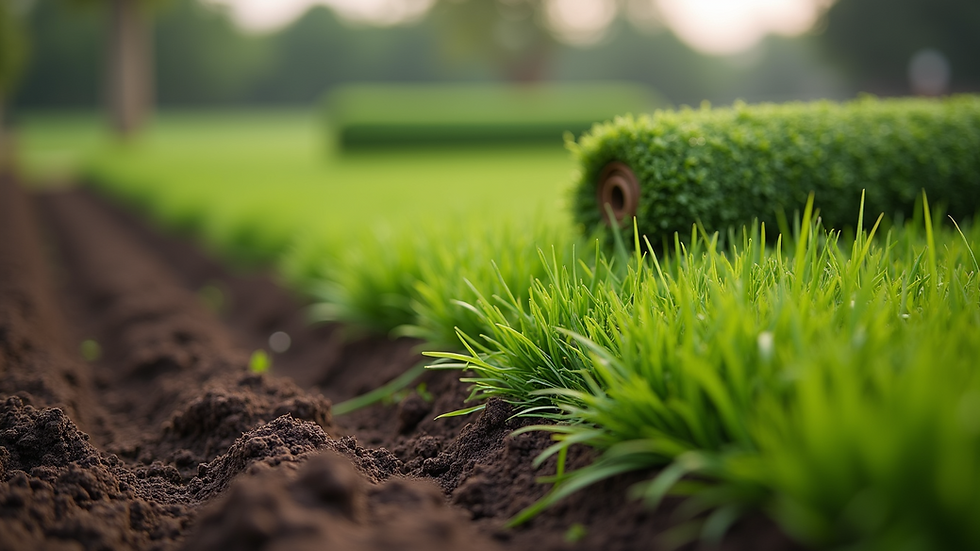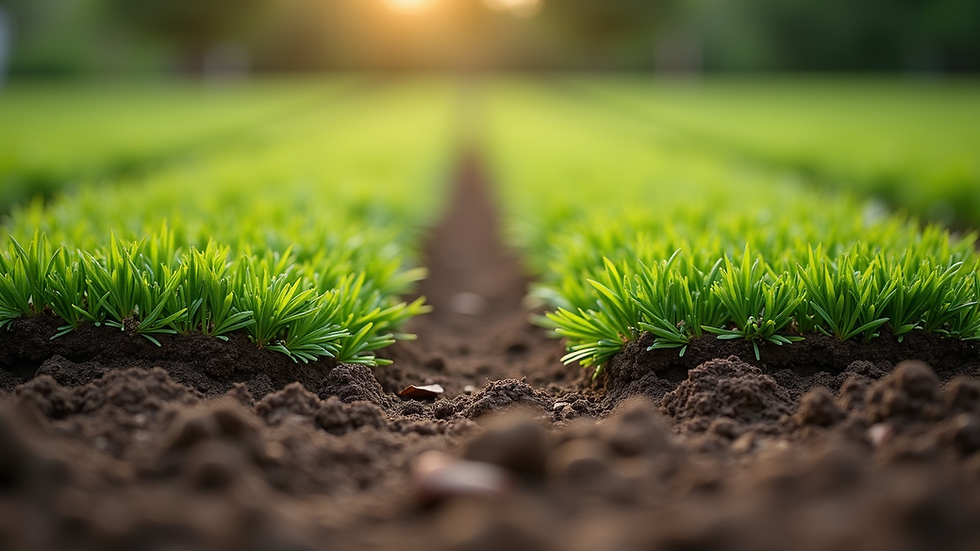How to Keep Your Lawn Green and Healthy All Year Round
- zinkservices17

- Jun 1
- 4 min read
Maintaining a vibrant, green lawn throughout the year can be a challenging task for homeowners. Lawn care involves more than just occasional mowing and watering. The key to a beautiful lawn lies in understanding the needs of the grass, soil, and the local climate. In this guide, you will learn effective practices to keep your lawn looking lush and healthy, no matter the season.
Essential Lawn Care Practices
To achieve a stunning lawn, it is crucial to understand the fundamental practices involved in lawn care. These methods are not just straightforward; they require a keen eye and ongoing attention throughout the year. Here are some essential practices:
Mowing: Regular mowing is vital. Instead of cutting your grass down to the roots, aim to remove only the top third of the grass blades. This promotes better growth and resilience.
Watering: Watering schedules will depend on the season. Generally, your lawn needs about 1-1.5 inches of water per week. Early morning is the best time to water, as it allows the grass to absorb moisture without encouraging disease.
Fertilizing: Fertilize your lawn at least twice a year. A nitrogen-rich fertilizer helps grass grow green and thick. Consider using an organic option to minimize environmental impact.
Aeration: Lawn aeration helps reduce soil compaction, allowing oxygen, water, and nutrients to penetrate the roots effectively. Aerate at least once a year.
Weed Control: Weeds can compete with your grass for nutrients and water. Regularly monitor for weeds and treat them immediately using herbicides, or try natural alternatives for a safer ecological approach.

Seasonal Lawn Care
Different seasons bring different challenges to lawn care. Here’s a breakdown of what your lawn needs in each season.
Spring
Spring is the season of renewal. As the frost melts away, it's time to prepare your lawn for growth. Here are some tips:
Rake your lawn: Clear away debris and thatch to promote air circulation.
Fertilization: Apply a balanced fertilizer to kickstart the growing season. Look for a product with a higher nitrogen ratio.
Overseeding: If your lawn has bare patches, consider overseeding to promote thick growth.
Weed Prevention: Apply a pre-emergent herbicide to prevent weeds from germinating.

Summer
Summer can be harsh on lawns, especially in regions with high temperatures. Here’s how to keep your lawn healthy during this time:
Water deeply and infrequently: Instead of daily light watering, provide deep watering sessions twice a week. This encourages deeper root growth.
Adjust mowing height: Raise the cutting height of your mower. Taller grass shades the soil, reducing evaporation.
Combat Pests: Watch for signs of pests like grubs. If detected, consider a safe pest control method appropriate for your lawn.

Fall
As temperatures cool, fall is an excellent time to prepare your lawn for winter. Follow these guidelines:
Aerate your lawn: Fall is the perfect time to aerate, as the soil is moist and forgiving.
Apply fertilizer: Use a slow-release fertilizer to provide nutrients that will nourish your lawn over the winter.
Clean up leaves: Regularly rake leaves to prevent them from smothering your grass.
Winter
While much of the lawn care may take a backseat during winter, there are still practices to consider:
Limit Traffic: Stay off the lawn as much as possible to prevent soil compaction. This is especially important if the ground is frozen or covered in snow.
Plan for Spring: Use this time to research lawn care strategies for the upcoming spring. Planning ahead can save time and ensure a healthy lawn.
Common Lawn Problems and Solutions
Maintaining a beautiful lawn doesn’t come without its challenges. Below are some common lawn issues and how to tackle them:
Brown Spots
Brown spots can be a result of a variety of issues, including disease, pests, or drought stress. To address brown spots:
Identify the cause: Inspect for pests or disease signs.
Adjust watering: Ensure that your lawn receives adequate water without overwatering.
Weeds
Weeds can quickly take over an otherwise healthy lawn. To manage weeds:
Hand-pull or use herbicides as necessary.
Apply mulch in garden beds to prevent weed germination.
Compacted Soil
Compacted soil can lead to poor nutrient and water absorption. To combat this:
Aerate the soil regularly to improve airflow and nutrient penetration.
Best Lawn Care Products
When it comes to lawn care, products can make a significant difference. Here are some recommended types of products:
Fertilizers: Look for nitrogen-rich fertilizers for boosting growth.
Herbicides: Pre-emergent and post-emergent options can help manage weeds effectively.
Soil Test Kits: Understanding your soil's pH and nutrient levels can guide your care strategy for the lawn.
Grass Seed Mix: Choose a mix compatible with your climate and sunlight conditions.
Resources for Seeking Help
If you find lawn care overwhelming, you’re not alone. There are plenty of resources available to help. Consider hiring professional lawn care services to assist you with proper maintenance. Professional services can ensure that your lawn stays healthy and vibrant all year long.
Final Thoughts on Lawn Care
Keeping your lawn green and healthy year-round requires ongoing commitment and proper techniques. Remember to adapt your lawn care practices according to the seasons and specific lawn needs. With a little patience and effort, your lawn can become a lush oasis that enhances the beauty of your home.

By following the tips mentioned above, you can take pride in your lawn's health and beauty throughout the year. Happy lawn care!








Comments